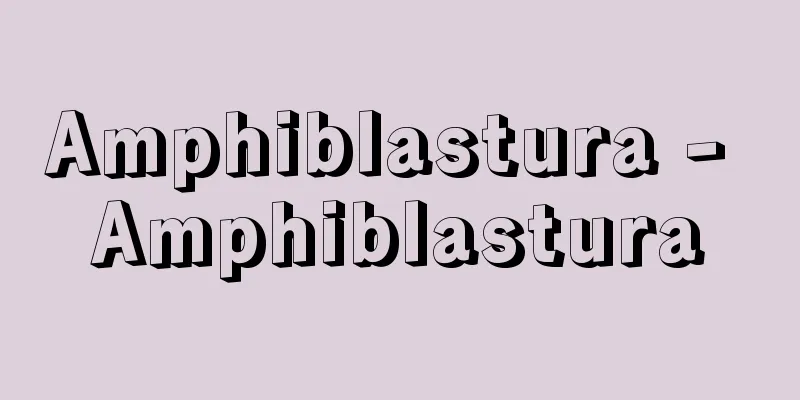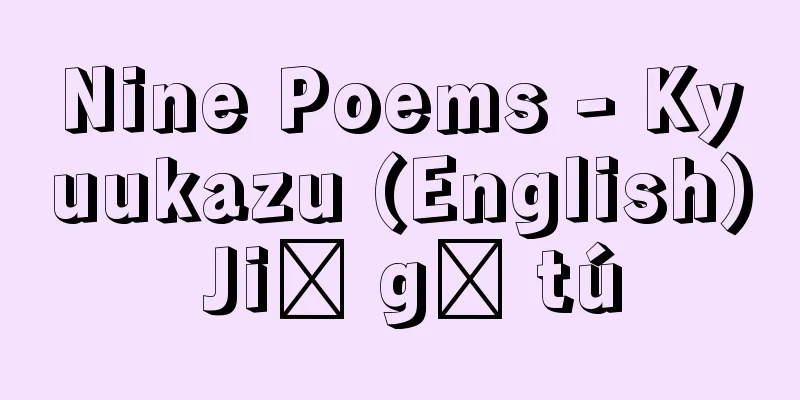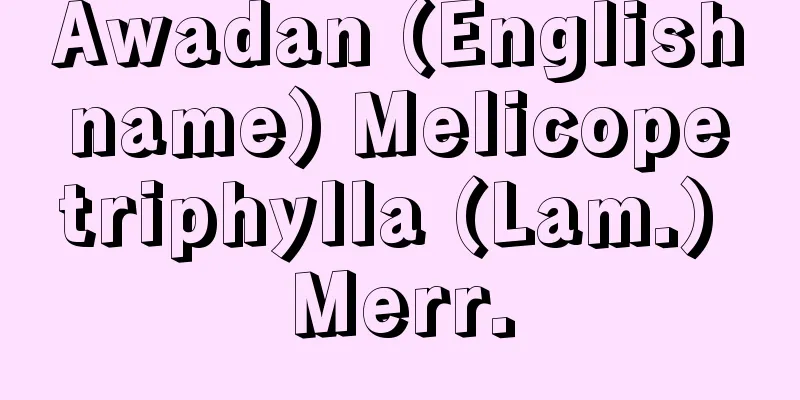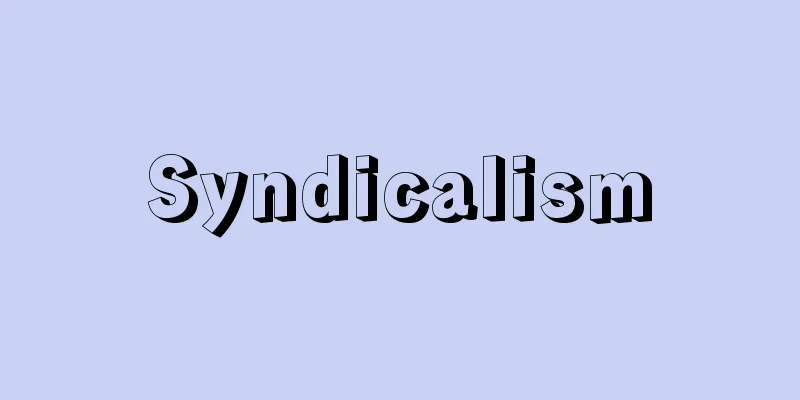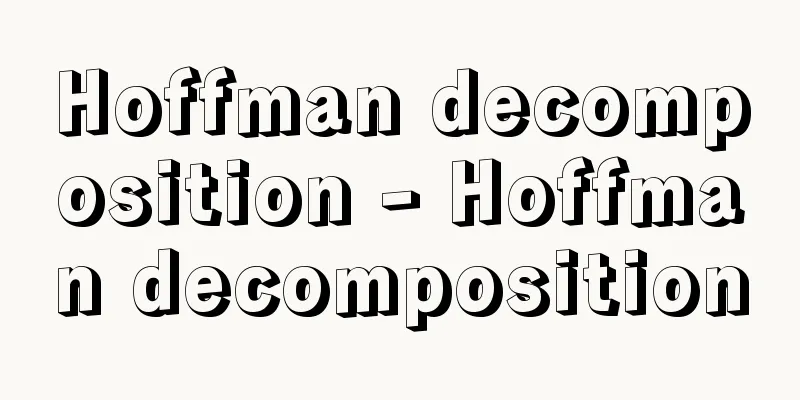Minamata disease

|
This organic mercury poisoning has occurred again in the areas around Minamata Bay in Kumamoto Prefecture and in the lower reaches of the Agano River in Niigata Prefecture, and is one of Japan's most representative pollution-related diseases. [Sadayoshi Shigeta] Identifying symptoms and causesBeginning around 1953, there were numerous cases of patients with peculiar central nervous system symptoms in the Minamata area in southern Kumamoto Prefecture, and the high mortality rate drew attention. Patients' symptoms included concentric visual field constriction, hearing loss, speech impediment due to tongue ataxia, clumsiness in everyday activities such as buttoning clothes, drinking water, and writing, inability to suddenly change direction or stop walking, and in severe cases difficulty standing or sitting down, trembling hands, and numbness around the mouth and fingertips, which appeared in 70-100% of patients. Investigations revealed that the disease was poisoning caused by repeated ingestion of large amounts of fish and shellfish caught in Minamata Bay, and that the toxin was strongly suspected to be heavy metals discharged from a chemical plant that discharged wastewater into the inner part of the bay, but the causative toxin could not be identified at first. However, abnormally high concentrations of mercury were subsequently detected in the mud on the seabed near the factory's drainage outlet, in fish and shellfish, and in the organs of patients.Furthermore, in 1961, methylmercury compounds were detected in fish, shellfish, and chemical plant sludge, which finally led to the discovery that the cause of the disease was methylmercury poisoning. Organic mercury poisoning in the Agano River basin (also known as Niigata Minamata disease) began with the outbreak of a number of patients with symptoms similar to Minamata disease among residents living downstream of the Agano River between 1964 and 1965. Investigations showed a clear correlation between the amount of river fish consumed and the amount of methylmercury in hair in the areas where patients were found. Based on the experience of Kumamoto Minamata disease, it was assumed that the reason for the accumulation of methylmercury in river fish was due to wastewater from an acetaldehyde manufacturing plant upstream, but confirmation was delayed due to the release of organic mercury pesticides into the Agano River following the Niigata earthquake on June 16, 1964. However, a quantitative analysis of the amount of mercury in the long hair of an adult woman who had been consuming large amounts of river fish for a long period of time revealed that the amount of mercury in the hair prior to the Niigata earthquake exceeded normal levels. Taking this into account, together with other data, it was determined that the contamination of river fish was due to the accumulation of methylmercury in the wastewater from the acetaldehyde plant. These two incidents show that Minamata disease has a different character from other pollution-related diseases. Methylmercury, a by-product of acetaldehyde produced in large quantities by acetylene-catalyzed hydration, was continuously discharged into the wastewater of a chemical factory, contaminating the waters. Methylmercury was once diluted to an extremely low concentration in the water, but was highly reconcentrated in fish and shellfish as it passed through the food chain among various organisms in the water. Minamata disease occurred as a result of methylmercury poisoning, which occurred among people who repeatedly ingested large amounts of the toxic fish and shellfish. [Sadayoshi Shigeta] Litigation issuesIn 1959, the Minamata Disease Research Group at the Kumamoto University School of Medicine announced the theory of organic mercury poisoning, which suggested that "methylmercury contained in wastewater from the Minamata factory of Shin-Nichi Chisso (now Chisso) enters the bodies of fish and shellfish, causing illness in people who eat large amounts of it." In 1961, they clarified the process by which methylmercury compounds are formed, and identified the factory as the source of contamination. However, it was not until 1968 that the government recognized it as a pollution-related disease. From 1964 to 1965, Minamata disease also broke out along the downstream coast of the Agano River in Niigata Prefecture (Niigata Minamata disease). This was caused by methylmercury discharged from the Showa Denko Kanose factory (now Kanose Denko), located about 60 kilometers upstream. 77 Niigata Minamata disease patients and surviving family members filed a lawsuit for damages against Showa Denko in 1967, and 112 Kumamoto Minamata disease patients and family members filed a lawsuit against Chisso in 1969. The Niigata Minamata disease lawsuit was decided in favor of the plaintiffs on September 29, 1971, and the Kumamoto Minamata disease lawsuit was also decided in favor of the patients on March 20, 1973, at the Kumamoto District Court. In addition, the "Special Measures Act for Relief of Health Damage Related to Pollution" (Health Damage Relief Special Measures Act) came into effect in April 1970, and relief measures such as medical expenses were made available to Minamata disease patients. After the Pollution-Related Health Damage Compensation Law (promulgated in 1973) came into force in September 1974, Minamata and the area around the downstream of the Agano River in Niigata were designated as Type 2 areas, and patients were certified, with compensation paid to certified patients according to the agreement. However, problems arose, such as delays in certification and many cases where certification was rejected, and in Kumamoto, 14 people whose cases were rejected (and one death) filed a second Minamata disease lawsuit, and in March 1979, 12 of them won, and in the appeal court ruling on August 16, 1985, four of the five plaintiffs, excluding those who had received administrative certification and withdrawn their lawsuits, won and the case was finalized. Furthermore, in Kumamoto, a third lawsuit was filed against the national and prefectural governments, and Chisso, and in Niigata, a second lawsuit was filed against the national and Showa Denko, and victims living in Kansai and Tokyo also filed lawsuits in the Osaka District Court, Kyoto District Court, and Tokyo District Court, respectively. In the third Kumamoto lawsuit, on March 30, 1987, the responsibility of the national and prefectural governments was recognized for the first time, in addition to Chisso. Meanwhile, in the criminal trial, the Supreme Court ruled in March 1988 that the former president and factory manager of Chisso were found guilty of professional negligence resulting in death. In September 1990, the Tokyo District Court recommended an early settlement of the Minamata Disease lawsuit, stating that "it is sad that the case remains unresolved more than 34 years after the official discovery." Similar recommendations were subsequently made by courts in Kumamoto, Fukuoka, and Kyoto. However, the national government, as the administrative body, refused to settle, and in September 1991, the Fukuoka High Court criticized the national government's stance of refusing to participate in settlement talks, and in March 1993, the Kumamoto District Court ruled in favor of the plaintiffs against the national government, Kumamoto prefecture, and Chisso in the second ruling of the third lawsuit. Finally, in February 1995, the ruling coalition of the Liberal Democratic Party, the Social Democratic Party, and the Sakigake Party presented a settlement proposal for "Resolving Minamata Disease." The proposal called for 2.6 million yen per uncertified patient, and a total of 4.94 billion yen in additional group payments to five victim groups, which the victims accepted. Then, in May 1996, an agreement was signed in Minamata City between the National Liaison Conference of Minamata Disease Victims and Lawyers (established in August 1984) and Chisso, and settlements were reached in courts around the country. The number of certified patients reached 2,263, and 10,350 people were eligible for relief (including those related to Niigata). However, the Kansai lawsuit continued, and the Osaka High Court, for the first time in a Minamata disease case, acknowledged the responsibility of the national government and Kumamoto Prefecture, adopted the so-called central theory (damage to the cerebral cortex) regarding sensory impairment in the certification of patients, and placed emphasis on two-point discrimination tests on the tongue and fingertips as a method of assessment, and recognized that 51 of the 58 plaintiff patients suffered from mercury poisoning. The case was appealed, but on October 15, 2004, the Supreme Court dismissed the appeal by the national government and others, finding the original ruling to be valid. This was the first Supreme Court ruling on a Minamata disease case. Since then, the number of people applying for new health handbooks based on patient certification and settlements has increased in Kumamoto, Kagoshima, and Niigata prefectures, so the government established the Minamata Disease Discussion Group to seek a solution (2006 report), and the ruling party also established a project team for victim relief to seek a new solution, but no solution was reached, and several new lawsuits have been filed in Kumamoto and Niigata. Regarding Niigata Minamata disease, Niigata Prefecture is aiming to resolve the relief issue by enacting its own relief ordinance. [Takahisa Awaji] "Ishimure Michiko, 'A Sea of Suffering Pure Land -- My Minamata Disease' (1969, Kodansha)" ▽ "Ui Jun, 'The Politics of Pollution -- Following Minamata Disease' (Sanseido Shinsho)" ▽ "Harada Masazumi, 'A Journey to Learn About Minamata Disease' (1985, Nippon Hyoronsha)" ▽ "Minamata Disease Trial -- At Stake for Human Dignity' (edited by the National Liaison Conference of Minamata Disease Victims and Lawyers' Group) (1997, Kamogawa Publishing)" ▽ "Minamata Disease Trial Complete History, Vol. 1: General Discussion and Vol. 2: Responsibility" (1998, 1999, Nippon Hyoronsha)" [References] | | | | |Source: Shogakukan Encyclopedia Nipponica About Encyclopedia Nipponica Information | Legend |
|
熊本県下の水俣湾周辺地域と新潟県下の阿賀野(あがの)川下流地域とに再度にわたって発生をみた有機水銀中毒で、日本の代表的な公害病の一つである。 [重田定義] 症状と原因の確定1953年(昭和28)ごろより熊本県南部の水俣市一帯に特異な中枢神経症状を呈する患者が多発し、死亡率も高いことが注目された。患者の症状は、求心性視野狭窄(きょうさく)、難聴、舌の運動失調による言語障害、服のボタンを留めたり水飲みや書字など日常動作の拙劣、歩きだすと急激な方向転換や停止が不可能となるほか、重症例では起立や起座も困難、手の震え、口囲や指先のしびれ感などがみられ、これらは患者の70~100%に出現した。調査によって、本疾患は水俣湾で漁獲した魚貝類を反復して多食することによる中毒症であり、毒物としては湾奥に排水を注ぐ化学工場から排出された重金属が強く疑われたが、当初は原因毒物が同定できなかった。しかし、その後、工場排水口付近の海底の泥土、魚貝類、患者の諸臓器などから異常に高濃度の水銀が検出され、さらに1961年には魚貝類および化学工場のスラッジ(へどろ)からメチル水銀化合物が検出されたことによって、ようやく本疾患の原因がメチル水銀中毒であることが判明するに至った。 阿賀野川流域の有機水銀中毒(新潟水俣病ともいう)は、1964年より1965年にかけて阿賀野川下流地域の住民に、水俣病と類似の症状を有する患者が多発したことに始まる。調査の結果、川魚摂取量と毛髪中のメチル水銀量が患者発生地区で明らかな相関を示した。メチル水銀が川魚に蓄積された理由として、熊本水俣病の経験から上流のアセトアルデヒド製造工場の排水によるものと推定されたが、1964年6月16日の新潟地震によって有機水銀農薬が阿賀野川に流出したこともあり、確定が遅れた。しかし、長期間多量の川魚を摂取していた成人女性の長髪中の水銀量を分割的に定量分析することによって、新潟地震以前の毛髪部分に正常値を超える水銀量が検出され、その他の資料とも総合的に判断して、川魚の汚染はアセトアルデヒド工場の排液中のメチル水銀の蓄積であると決定された。 これらの二つの事件から、水俣病は他の環境汚染による公害病とは異なった性格をもつことがわかる。すなわち、アセチレン接触加水反応によりアセトアルデヒドを大量に製造していた化学工場の排水中に、反応塔内で副生したメチル水銀が持続的に流出して水域を汚染し、水中でいったん、きわめて薄い濃度にまで希釈されたメチル水銀が、水中の諸生物間の食物連鎖を経由することによって魚貝類へ高度に再濃縮され、その有毒化魚貝を反復大量に摂取した人々のなかから発生をみたメチル水銀中毒症、これが水俣病である。 [重田定義] 訴訟問題1959年(昭和34)に熊本大学医学部の水俣病研究班が「新日窒(現、チッソ)水俣工場の排水中に含まれるメチル水銀が魚貝の体内に入り、これを多食した者が発病する」という有機水銀中毒説を発表、1961年にはメチル水銀化合物の生成過程を明らかにし、汚染源が同工場であることをつきとめた。しかし、政府が公害病と認定したのは1968年であった。また、1964年から1965年にかけて、新潟県阿賀野川下流沿岸にも同じく水俣病が発生した(新潟水俣病)。これは、上流約60キロメートルにある昭和電工鹿瀬(かのせ)工場(現在の鹿瀬電工)から排出されたメチル水銀が原因であった。 新潟水俣病の患者や遺族ら77名は、1967年昭和電工を被告として損害賠償訴訟を提起し、熊本水俣病の患者と家族112名は1969年にチッソを相手に訴えを提起した。新潟水俣病訴訟は、1971年9月29日、原告側勝訴で確定し、熊本水俣病訴訟も1973年3月20日、熊本地裁において判決が言い渡され、患者側の勝訴となった。また、1970年4月から「公害に係る健康被害の救済に関する特別措置法」(健康被害救済特別措置法)が施行され、水俣病患者に対しても医療費支給などの救済措置が講じられるようになった。 1974年9月、公害健康被害補償法(1973年公布)の施行後は、第2種地域に水俣や新潟の阿賀野川下流周辺地域が指定され、患者認定が行われて、認定患者には協定に基づいて補償金が支払われている。しかし、認定の遅れや認定棄却者が多数出るなどの問題が生じ、熊本では棄却者(および死者1名)14名が第二次水俣病訴訟を提起し、1979年3月、12名が勝訴し、1985年8月16日の控訴審判決でも、行政認定を受けて訴えを取り下げた者を除く5名の原告のうち、4名が勝訴して確定した。さらに熊本では、国と県およびチッソを相手に第三次訴訟が、新潟では国および昭和電工を相手に第二次訴訟が提起され、そのほか、関西在住の被害者および東京在住の被害者も、それぞれ大阪地裁、京都地裁および東京地裁に訴訟を提起した。熊本の第三次訴訟では、1987年3月30日、チッソのほか、初めて国と県の責任が認められた。他方、刑事裁判は1988年3月の最高裁判決で、チッソの元社長と工場長の業務上過失致死罪が確定した。1990年(平成2)9月には東京地方裁判所で「公式発見後34年以上が経過してなお未解決であることは悲しむべきこと」であるとして水俣病裁判の早期解決を勧告した。その後、熊本や福岡、京都の裁判所でも同じような勧告が続いた。しかし、行政の主体たる国は和解を拒否、福岡高等裁判所は1991年9月、和解協議への参加を拒む国の姿勢を批判、1993年3月熊本地方裁判所の第三次訴訟第2陣判決で国・熊本県・チッソに対して原告勝訴とした。ついに1995年2月、自民・社会・さきがけの連立与党3党は「水俣病解決について」の解決案を示した。未認定患者1人当り260万円、被害者団体5団体に計49億4000万円の団体加算金を補償する、などとする和解案を提示、被害者側もこれを受け入れた。そして1996年5月水俣市において水俣病被害者・弁護団全国連絡会議(1984年8月結成)とチッソとの間で協定書が締結され、各地の裁判所で和解が成立した。認定患者2263人、救済対象者1万0350人(ほかに新潟関係あり)に及んだ。 しかし関西訴訟は続き、大阪高裁は、水俣病事件の高裁判決としては初めて国と熊本県の責任を認め、患者の認定についても、感覚障害に関するいわゆる中枢説(大脳皮質の損傷)を採用し、判定方法として舌および指先の2点識別覚検査を重視して、原告患者58名のうち51名について水銀中毒の罹患(りかん)を認めた。この事件は上告されたが、最高裁は2004年10月15日、原審判決を正当として国等の上告を棄却した。水俣病事件に関する初めての最高裁判決であった。その後、熊本県、鹿児島県、新潟県において、患者認定や和解に基づく新保健手帳を申請する者が増加したため、政府は「水俣病に係る懇談会」を設置して解決を目ざし(2006年報告書)、また、与党に被害者救済のためのプロジェクト・チームを設置して新たな解決案を模索したが、解決に至らず、熊本および新潟で新たな複数の訴訟が提起されている。なお、新潟水俣病については、新潟県は独自に救済条例を制定して救済問題の解決を目ざしている。 [淡路剛久] 『石牟礼道子著『苦海浄土――わが水俣病』(1969・講談社)』▽『宇井純著『公害の政治学――水俣病を追って』(三省堂新書)』▽『原田正純著『水俣病にまなぶ旅』(1985・日本評論社)』▽『水俣病被害者・弁護団全国連絡会議編『水俣病裁判――人間の尊厳をかけて』(1997・かもがわ出版)』▽『水俣病被害者・弁護団全国連絡会議編『水俣病裁判全史』第1巻「総論編」、第2巻「責任編」(1998、1999・日本評論社)』 [参照項目] | | | | |出典 小学館 日本大百科全書(ニッポニカ)日本大百科全書(ニッポニカ)について 情報 | 凡例 |
>>: Minamata [city] - Minamata
Recommend
Oka Castle Ruins
<br /> Castle ruins in Taketa, Taketa City, ...
Normal school - Shihan Gakko
A school whose sole purpose is to train primary s...
Svin'in, PP (English spelling) SvininPP
…It can also be translated as “Records of the Fat...
Azande - Azande (English spelling)
A Sudanese-speaking ethnic group living in Centra...
Musculoskeletal system
…The numerous bones are also organs that make up ...
Abidjan - Abidjan (English spelling)
Abidjan is the former capital of Côte d'Ivoir...
Iramomi - Iramomi
It is an evergreen coniferous tall tree of the Pi...
Akira Kurosawa
Born: March 23, 1910, Tokyo [Died] September 6, 19...
Urnenfeld culture
A culture from the European Bronze Age. It is usua...
Bernardus Silwestris - Cosmology
…He became chancellor of Chartres around 1156. He...
Provisional Penalty Law - karikeiritsu
It is believed that this was the first criminal co...
Date Masamune
Year of death: May 24, 1636 (June 27, 1636) Year o...
Aiza - Aiza
...There are various types of indigo, such as dee...
center of mass
…[Minoru Nakaoka] (2) Center of gravity in mechan...
Azuma Nishiki - Azuma Nishiki
…The Oranda Shishigashira (Dutch Lion Head) (illu...
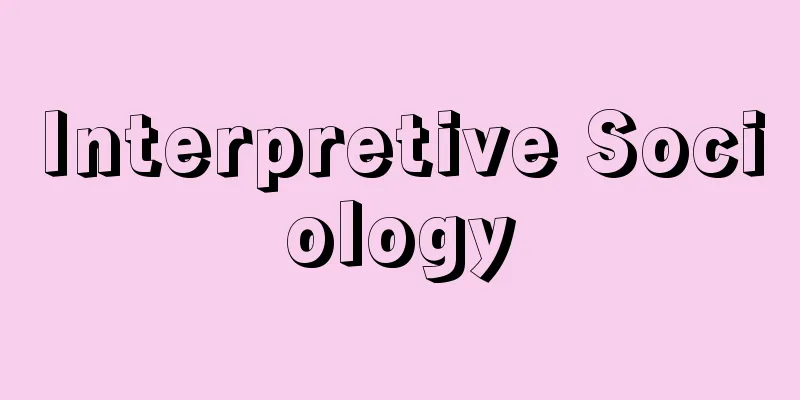
![Fuchu [city] - Fuchu](/upload/images/67ccb6323ff55.webp)

